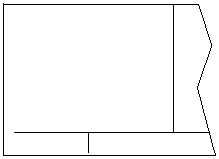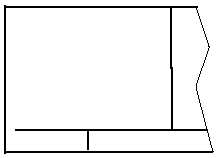TM 1-1510-225-10
3D-67
calibrated airspeed isn’t known, use the
indicated airspeed.
4. Use the left outer knob to move the cursor
to the first ALT position, and then enter
the indicated altitude using the left inner
and outer knobs. If the indicated altitude
was previously entered on the CAL 1
page, it will already be displayed.
5. Turn the left outer knob to move the cursor
to the first BARO position and then enter
the current altimeter setting using the left
inner and outer knobs. If the altimeter
setting was made on the CAL 1 page, it
will already be displayed.
6. Rotate the left outer knob to move the
cursor to the first TEMP position, and then
enter the outside air temperature (in ºC)
by using the left inner and outer knobs.
The first digit of the temperature is either
zero (0) if the temperature is above zero
or a minus (-) if the temperature is below
zero. For maximum accuracy, the total air
temperature should be entered. This is
the temperature of the air including the
effect of heating due to movement through
the air. Because of the two types of
temperature, a temperature entry made on
the CAL 1 page is not transferred to the
CAL 2 page. The TAS is now displayed
as illustrated in Figure 3D-97.
7. Press the left CRSR button to turn off the
left cursor function.
CAL 2
TAS
CAS: 187KT
ALT:24000FT
BARO:29.92”
TEMP: -32o C
TAS 265KT
Figure 3D-97. CAL 2 Page
NOTE
If the AETMS is installed and interfaced to
the KLN 90B, the OTH 9 page displays the
TAS for the present conditions.
c. The Calculator 3 Page. The CAL 3 page is
used to calculate the wind direction and speed. In
addition, the headwind or tailwind component of the
wind is displayed. Refer to Figure 3D-98.
CAL 3
WIND
TAS 261KT
HDG 343o
HDWND 21KT
WIND 042o t
53KT
Figure 3D-98. CAL 3 Page
1. Select the CAL 3 page on the left side.
2. Press the left CRSR button to turn on the
cursor function.
3. Enter the TAS by using the left inner and
outer knobs. If the CAL 2 page was
previously used to calculate the TAS, it will
already be displayed.
4. Use the left outer knob to move the cursor
to the first HDG position, and then enter
the aircraft’s heading using the left inner
and
outer
knobs.
The
headwind
(HDWND) or tailwind (TLWND) and the
wind
direction
and
speed
are
now
displayed. The wind direction is relative to
true North.
5. Press the left CRSR button to turn off the
cursor function.
NOTE
Wind calculations are only correct when an
accurate heading and true airspeed have
been entered.
If the KLN 90B is interfaced with the
AETMS, line three of the CAL 3 page is
blank. Heading is automatically inputted
and used in the wind calculation.
If the KLN 90B is interfaced with the
AETMS, the OTH 9 page displays present
wind information directly.
d. The Calculator 4 page. The CAL 4 page is
used to determine vertical navigation descent/ascent



